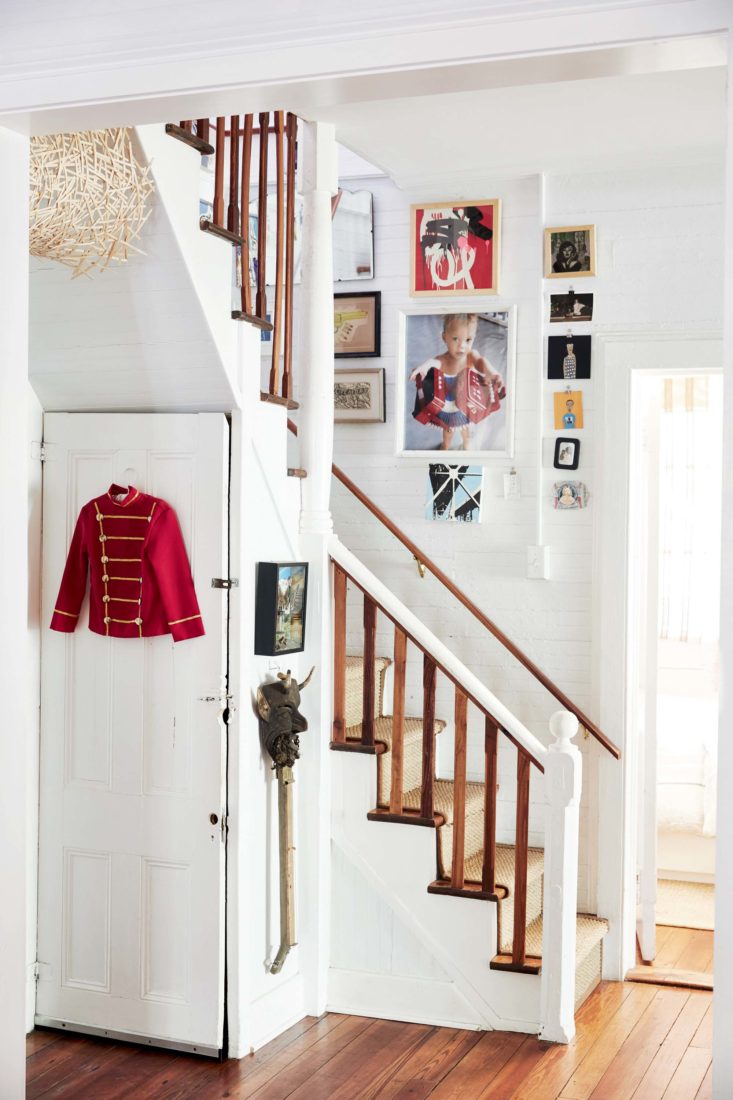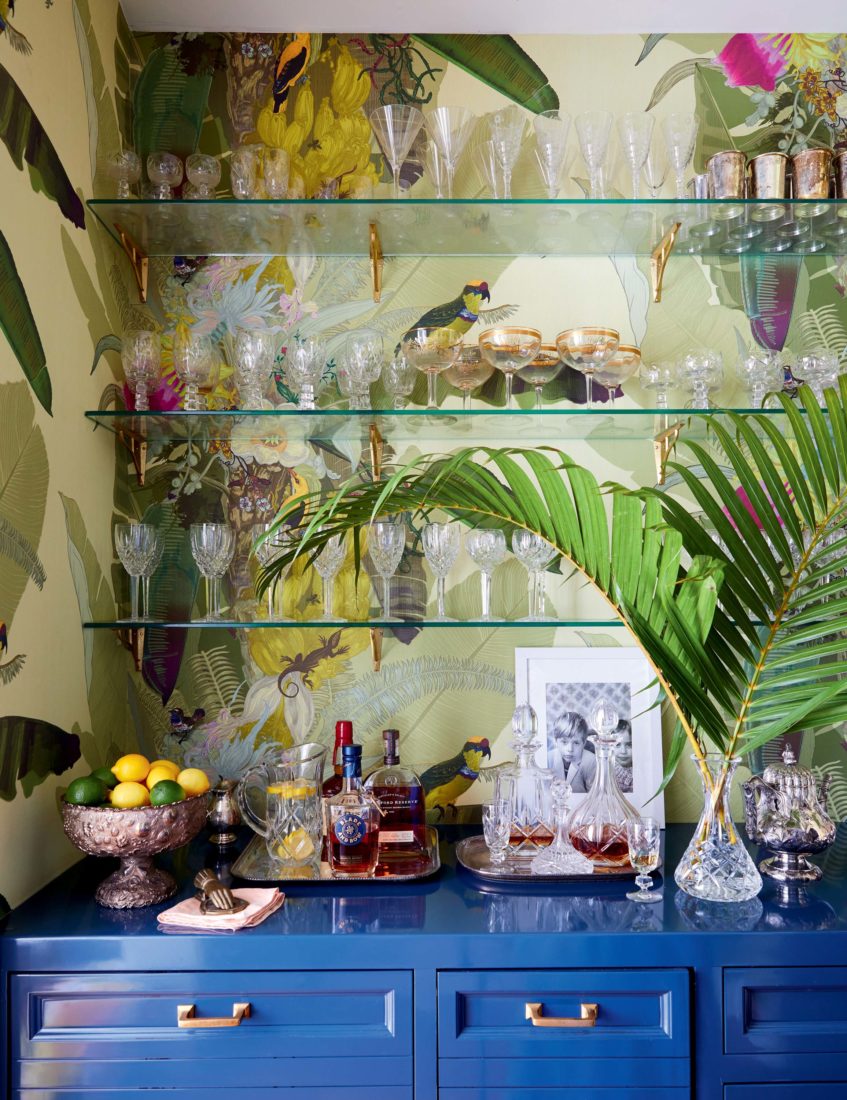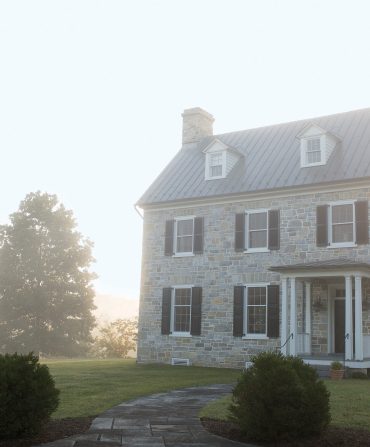Homeplace
Inside an Artful Coastal Cottage
Taking art-house style to the max inside a South Carolina beach house

Photo: Brie Williams
The front doors of this South Carolina beach house are modeled on the doors of an old Sullivan’s Island ferry.
If Buff and Leila Ross could choose a single word to describe themselves, it would be maximalist, a term they frequently bat around their cottage on Sullivan’s Island, South Carolina—partly in defense of the overwhelming visual stimulation of their chockablock keepsakes, photographs, and art, and partly as a spirited rallying cry. Instead of “less is more,” they think more like the American architect Robert Venturi: “Less is a bore!”
To showcase that collection, the two creative minds transformed a quirky family beach house into a living art gallery with a thoughtful expansion by Charleston architectural designer Hunter Kennedy (a Garden & Gun contributing editor). Buff, after all, had once been a curator of contemporary art, and Leila had worked in galleries on Magazine Street in New Orleans. One wedding and two children later, Leila launched the online art-dealing platform Show and Tell Art and Design, but she soon realized that clients needed to see and experience the art firsthand. So the couple decided to open their home for periodic exhibit pop-ups, mingling their own pieces with items for sale on the beach house’s mostly stark-white walls—an ideal blank canvas. But like the best art, the home isn’t just a pretty picture. It has a rich story to share as well, one Kennedy strove to honor with his addition.

Photo: Brie Williams
Leila hanging Faceless Muse, by Nassia Kapa.
The century-old cottage looms high among chunky palmettos, sprouting up like an organic maritime tree house. A whale-shaped installation dangles from weathered rafters on the L-shaped front porch, “sculpted” by Buff from the entrails of an old Klepper folding kayak once owned by his late mother, from whom he inherited the house. Leila and their sons painted it white, and the shape reminded Buff of childhood visits to the Charleston Museum, where the massive skeleton of an old right whale floats above the entry hall. Buff added saw blades as “teeth,” and the kayak-whale looms as a sort of family mascot.

Photo: Brie Williams
Whale art by the Ross family.
“That’s our good-luck charm,” Leila says as she pulls open two curiously askew doors that the original builder salvaged from a retired ferryboat. “Note the Dr. Seussian angles,” she says with a smile. The house dates to 1905, when small-scale development of the island first took off, spawned by a sleek new electric trolley connecting commuters and weekend excursionists from ferryboat wharves to their “station” destinations. The trolley evaporated with the advent of automobiles, but the station-number street names remain to this day.

Photo: Brie Williams
The kitchen.
Kennedy went to great lengths to echo the house’s historic elements while effectively doubling its modest footprint and adding an expansive living area, kitchen, and guest quarters. He repurposed more old ferry doors found stacked in the basement, and worked with carpenters to mimic historic paneling—“to build off the existing vernacular of the house,” Kennedy says. “I had the luxury of spending a lot of time in the old house. Almost all the major details in the addition used this same design vocabulary—the twelve-foot ceilings, tongue-and-groove beadboard, and heart-pine flooring.”

Photo: Brie Williams
A living-room tableau.
Buff grew up in the house, marveling at those same ferry doors, as well as the drafty pocket windows that open down instead of up, operating on a counterweighted pulley system. His mother’s dried clay handprint still graces the door that she would thrust open while coming up from her pottery studio. And on sweltering summer evenings, his parents would set a cot on the side porch and take turns sprinkling their son with ice water until he slept.

Photo: Brie Williams
The master bedroom by interior designer Angie Hranowsky.
Now those lingering memories coexist with heirloom furniture nestled alongside vivid Peruvian rugs, African artifacts, and bohemian lighting. Abstract contemporary paintings hang from white walls. A glassed-in coffee table showcases a stuffed alligator gar—Buff’s first Christmas gift to Leila after he learned she routinely dreamed of the peculiar prehistoric fish—surrounded by bird nests and other natural finds. “I like to joke that in my next life, I’ll be a Japanese minimalist with nothing but a Noguchi lamp, a mattress with a white sheet, and six books,” Leila says. “But in this lifetime, we are emotionally driven people. We’re so sentimental: Every single object has a story, some dear meaning of why we have it.”
The Rosses may be sentimental, but the house is not a museum. As the home base for two dogs and two children, it feels lived in, and reflects a sense of humor, too. Case in point: the fantastical floating sculpture by Jonathan Brilliant formed from interlaced coffee stirrers into a funnel undulating across a bathroom ceiling. “It used to be bigger,” Buff says. “A kid during a hurricane party reached up and pulled a section of it down.” He laughs without a hint of regret, as if pleased that the artwork dared a child to interact with it.

Photo: Brie Williams
A ceiling installation of coffee stirrers by Jonathan Brilliant above a hallway door.
A small hallway doubles as a bar bedecked with silver and crystal from Leila’s late uncle, its “peacock teal” lacquered custom cabinetry enveloped in lush, tropical wallpaper by the Glasgow-based design group Timorous Beasties. “When I die, just wrap me up and bury me in this wallpaper,” Leila says. The bar’s glamorous allure serves as a hyphen of sorts, connecting the original house to an addition that Kennedy carefully planned to last for generations.

Photo: Brie Williams
The bar.
“This house is a survivor,” Leila says, “and we wanted to honor that. The roof blew off in Hurricane Hugo; this home has withstood some crazy natural events and has its own story to tell.” Most recently, while installing a much-needed HVAC system, Buff and Leila discovered the telltale curvature of maritime beams hidden within walls—the ribs of a nineteenth-century side-wheel steamer that once picked up revelers from festive island dances at grand resort pavilions and floated them home by moonlight across a shimmering harbor. Just one more chapter in the home’s unfolding tale.

Photo: Brie Williams
Leila, Jack, and the Rosses’ younger son, Barlow, on the beach.







